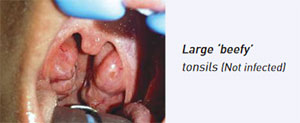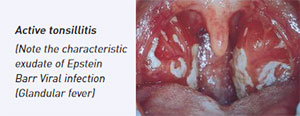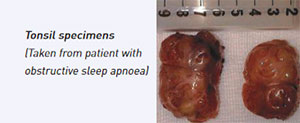Tonsils to Remove or not to Remove?


What are tonsils?
The tonsils are two meatball-like lumps of tissue on either side of the back of the tongue behind the arch of the soft palate. Up to the age of two, the tonsils help to fight infections but after that they may become less beneficial and more problematic because of size or infection.

Infection of the tonsils (tonsillitis) is one of the most common conditions in children and adolescents. In the majority of cases, tonsillitis is initially caused by a virus which progresses when a bacteria becomes involved in the process. This is why antibiotics are often prescribed for tonsillitis, especially after 48 hours of a sore throat that is not getting better.

So when should the tonsils be removed?
Removing the tonsils (tonsillectomy) is a relatively common operation and each year more than 500,000 tonsillectomies are performed in North America, mainly due to recurrent infections or sleep-disordered breathing. In general, a tonsillectomy improves the quality of life of the patients and their family. However, not everyone with a sore throat or snoring requires tonsillectomy.
In some conditions, there is no difficulty in deciding whether tonsillectomy is required.
- Suspicion of cancer or a metastatic head and neck cancer of unknown origin.
- Obstructive sleep apnoea secondary to huge tonsils blocking the upper airway.
- An episode of a tonsillitis-associated systemic disorder such as rheumatic heart disease, kidney damage (glomerulonephritis) or chest abscess secondary to peritonsillar infection - fortunately these life threatening complications of recurrent tonsillitis are rare.

Tonsillectomy is beneficial if the number of episodes of tonsillitis/sore throat are:
- At least 7 times in the previous year or
- At least 5 times in each of the previous 2 years or
- At least 3 times in each of the previous 3 years.
What should I do if my child gets a sore throat but not often enough to satisfy the criteria for tonsillectomy?
n such a situation, other factors associated with poor quality of life have to be considered. These factors may be summarised as follows:
- The pattern of illness, for example, throat infections that are very severe or poorly tolerated by the child or adolescent
- Drug allergies that make antibiotic therapy difficult
- The occurrence of at least 2 peritonsillar abscesses (quinsies)
- The presence of PFAPA - Periodic Fever, Aphthous stomatitis, Pharyngitis and Adenitis (inflammation of lymph nodes).
- Febrile convulsion
- Halitosis (bad breath)
- The negative effects of recurrent tonsillitis/sore throat on the quality of life of the parents and other family members.



